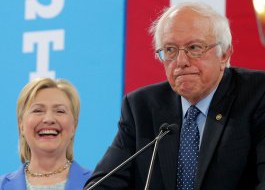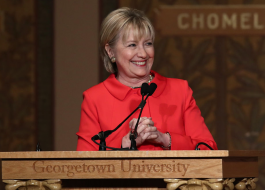 Hillary Clinton. REUTERS/Bryan Woolston
Hillary Clinton. REUTERS/Bryan Woolston
Democratic presidential nominee Hillary Clinton and former rival Bernie Sanders teamed up to discuss college affordability in a campaign stop in New Hampshire on Wednesday.
The two touted her debt-free college plan, the New College Compact, which she first proposed in August 2015, and has since refined.
Last year, the former secretary of state promised that students attending public colleges would not need to take out loans.
"I'm a little different from those who say free college for everybody," she said on NBC's "Today" show in 2015. "I am not in favor of making college free for Donald Trump's kids. I am in favor of making college free for your grandson by having no-debt tuition."
Clinton's plan would make tuition at four-year public colleges and universities "debt free" and would be calculated based on family income.
Her proposal starts by making public college free for families that earn $85,000 or less annually, gradually lifting the threshold up to families that earn $125,000 a year by 2021. Community college would be free for all students, and interest rates on student loans would be decreased.

Clinton's plan would also allow students to refinance student debt at current rates and would lower interest rates on future loans.
She previously proposed spending $350 billion over 10 years for the plan and has moved that estimate up to $500 billion, in part by cutting tax deductions for high-income Americans.
She also noted the proposal would not add any money to the national debt.
While her plan appeals to many in her base, particularly young people who were fans of Bernie Sanders' free-college plan, the biggest criticism is that it's unclear how she will make the plan a reality.
“Her plan at this juncture doesn’t fill out the details,” Peter McPherson, president of the Association of Public and Land-grant Universities, told The New York Times.
The plan does indicate that it will be funded by closing loopholes. The Committee for a Responsible Federal Budget, an independent, nonpartisan nonprofit organization has found that the plan could be funded this way.
Still, further details are scant, leading some experts to opine the plan was thrown together quickly as an answer to Sanders' proposal.
Clinton's plan "sounded much more like something intended to energize a campaign rally,” Lanae Erickson Hatalsky, vice president at Democratic think tank Third Way, told The Wall Street Journal.
Hatalsky noted that the proposal is very short compared to Clinton's other policy proposals, which “are five pages of dense text with very specific ways of how they’re going to pay for it and how much it would cost."




